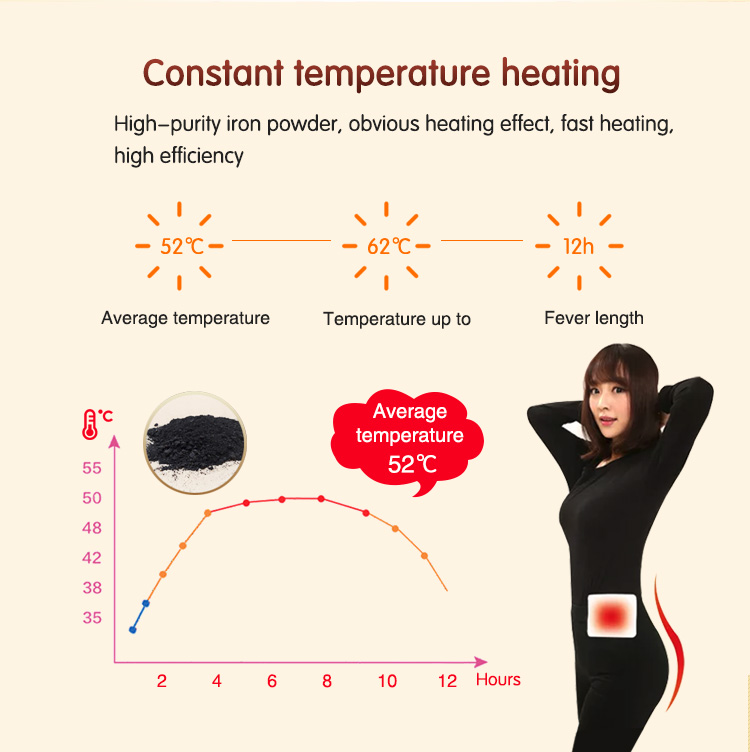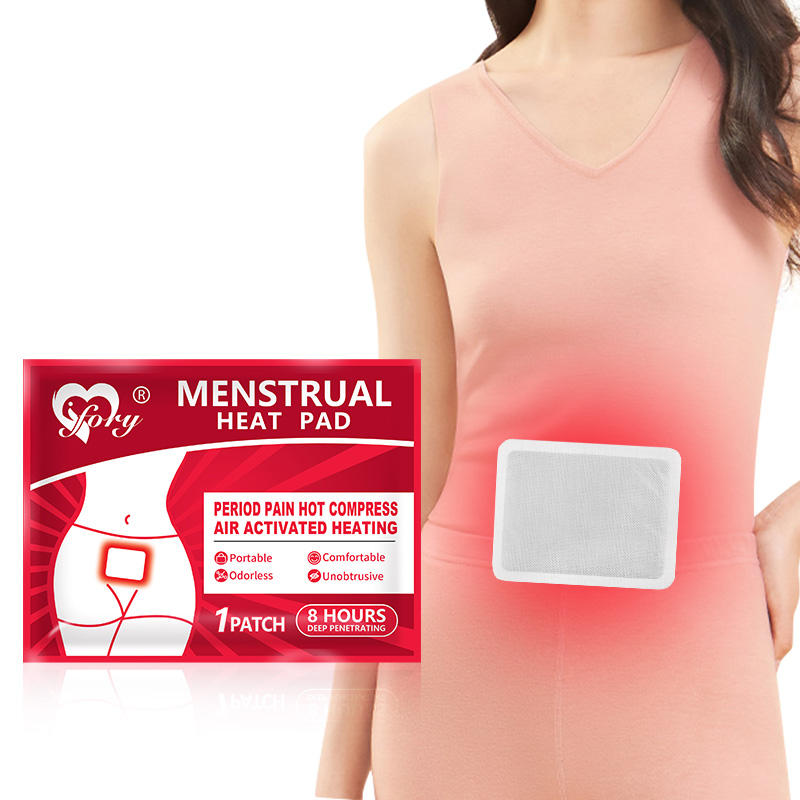What Are Some Sustainable Materials Used in Menstrual Heat Pads?
The menstrual heat pad market has experienced considerable growth due to the demand for effective, non-invasive period pain relief. As sustainability becomes an increasing priority for consumers, Menstrual Heat Pad Manufacturers, OEMs, and Suppliers are exploring sustainable alternatives to traditional materials. Sustainable options allow brands to appeal to environmentally conscious customers while minimizing the ecological impact associated with product waste, manufacturing, and disposal. This article explores various sustainable materials for Custom Menstrual Heat Pads and Private Label Menstrual Heat Pads, highlighting their benefits and how they contribute to a greener product lifecycle.

1. Why Sustainability Matters in Menstrual Heat Pads
The environmental impact of disposable menstrual products has led to a greater interest in sustainable materials. Traditionally, menstrual heat pads contain synthetic materials and non-renewable components, which contribute to landfill waste and pollution. Sustainable materials can significantly reduce this impact by using renewable resources, biodegradable fibers, and environmentally friendly production processes.
Menstrual Heat Pad Manufacturers and OEM Suppliers who invest in sustainable materials are not only helping to protect the environment but also positioning their products in line with evolving consumer values. These eco-friendly materials also often reduce the energy requirements for production and can enhance the safety and comfort of the product for the end user.
2. Types of Sustainable Materials for Menstrual Heat Pads
Many options are now available for creating sustainable menstrual heat pads, ranging from organic fabrics to biodegradable adhesives. Here, we’ll delve into some of the most commonly used materials by Menstrual Heat Pad Manufacturers.
a. Organic Cotton
Organic cotton is a highly sustainable option for Custom Menstrual Heat Pads. Grown without pesticides or synthetic fertilizers, it’s both environmentally friendly and hypoallergenic. For menstrual heat pads, organic cotton can be used for the outer layer, which is in direct contact with the skin, providing a soft and comfortable surface.
Benefits of Organic Cotton:
- Biodegradable: Unlike synthetic fibers, organic cotton decomposes naturally.
- Low Impact Farming: Organic cotton farming uses less water and eliminates harmful chemicals.
- Hypoallergenic: It’s gentle on the skin, making it ideal for users with sensitivities.
By opting for organic cotton, Menstrual Heat Pad Suppliers can offer an environmentally responsible product that aligns with consumer health and comfort.
b. Bamboo Fiber
Bamboo fiber is another excellent choice for eco-conscious Menstrual Heat Pad OEMs. As a fast-growing plant, bamboo requires minimal water and no pesticides, making it a renewable resource. Bamboo fibers are naturally antibacterial, breathable, and soft, making them a suitable material for the outer layer of menstrual heat pads.
Benefits of Bamboo Fiber:
- Renewable Resource: Bamboo grows rapidly and regenerates without replanting, reducing deforestation.
- Antibacterial Properties: Naturally resistant to bacteria, bamboo fibers can enhance the pad's freshness and hygiene.
- Compostable: Bamboo fibers decompose fully, reducing long-term environmental impact.
For Private Label Menstrual Heat Pads, bamboo fiber provides a unique and sustainable selling point that resonates with eco-conscious consumers.
c. Biodegradable Polymers
Biodegradable polymers are an innovative solution used by some Menstrual Heat Pad Manufacturers for the inner filling or lining of heat pads. Unlike traditional synthetic polymers, biodegradable options break down naturally over time, reducing plastic waste. These polymers can be sourced from plant-based materials and are often heat-resistant, making them suitable for the heat-retaining components of menstrual heat pads.
Benefits of Biodegradable Polymers:
- Environmentally Friendly Disposal: These polymers decompose faster than traditional plastics.
- Renewable Sourcing: Plant-based biodegradable polymers reduce dependency on fossil fuels.
- Safe for Users: Free from harmful chemicals commonly found in synthetic fillers.
Using biodegradable polymers helps Menstrual Heat Pad OEM Suppliers reduce the environmental impact of disposable menstrual products without sacrificing functionality.
d. Natural Minerals for Heating Elements
Some Custom Menstrual Heat Pads are designed with natural minerals, such as iron powder or activated charcoal, to generate heat. These natural minerals are often combined with salt and other biodegradable materials to create a heat source that is both effective and eco-friendly. Unlike battery-powered or chemically activated pads, mineral-based heating is non-toxic and reduces the need for synthetic components.
Benefits of Natural Mineral Heating Elements:
- Eco-Friendly: Minerals are naturally occurring and can often be safely disposed of after use.
- Non-Toxic: Free from harmful chemicals, mineral-based heat pads are safer for users and the environment.
- Cost-Effective: Natural minerals provide a low-cost heating solution, making them affordable for both manufacturers and consumers.
Mineral heating elements appeal to eco-conscious users and align with the growing trend towards more natural wellness solutions.
e. Recycled Polyester Fillings
While polyester is traditionally a synthetic material, using recycled polyester in menstrual heat pads helps to repurpose existing materials, reducing plastic waste. For heat pads, recycled polyester can be used for filling, especially in reusable designs. Although not fully biodegradable, recycled polyester minimizes the need for new plastic production and supports a circular economy.
Benefits of Recycled Polyester:
- Reduces Plastic Waste: By repurposing plastics, recycled polyester cuts down on landfill and ocean pollution.
- Durability: Recycled polyester is robust, making it suitable for reusable menstrual heat pads.
- Lower Environmental Impact: Producing recycled polyester uses less energy than manufacturing virgin polyester.
Incorporating recycled polyester can also appeal to customers who prioritize waste reduction and resource conservation.
3. Advantages of Sustainable Menstrual Heat Pads for Manufacturers and Suppliers
Adopting sustainable materials brings multiple benefits to Menstrual Heat Pad Manufacturers, OEMs, and Suppliers. It enables brands to align with consumer demand, strengthen brand reputation, and potentially reduce production costs.
Key Advantages:
- Enhanced Brand Image: Brands that offer eco-friendly products often enjoy a stronger, more loyal customer base.
- Lower Carbon Footprint: Sustainable materials reduce the environmental impact, which is beneficial both ecologically and economically.
- Regulatory Compliance: Many countries are adopting stricter regulations on non-biodegradable waste. Sustainable materials help brands comply with such laws.
- Long-Term Cost Savings: While initial investments in sustainable materials might be higher, they often lead to cost savings over time, especially with biodegradable and renewable resources.
By embracing sustainability, Private Label Menstrual Heat Pads and Custom Menstrual Heat Pads can gain an edge in the market by demonstrating social responsibility.
4. Challenges of Using Sustainable Materials
While the benefits are clear, there are challenges associated with using sustainable materials in menstrual heat pads. These include the cost of sourcing eco-friendly materials, the need for specialized production processes, and possible compromises on product performance. Additionally, some sustainable materials may require rigorous testing to ensure they can meet the heating requirements of menstrual pads.
However, as demand and technological advances grow, Menstrual Heat Pad Manufacturers will likely find more cost-effective solutions and improvements in the functionality of sustainable materials.
5. The Future of Sustainable Menstrual Heat Pads
Sustainable menstrual heat pads are expected to become a mainstream product as consumers continue to prioritize environmental responsibility. Innovations in material science, such as plant-based polymers and advanced mineral heating elements, will further enable Menstrual Heat Pad OEM Suppliers to develop high-performance eco-friendly products. Additionally, brands offering Custom Menstrual Heat Pads with sustainable options can cater to specific demographics, particularly younger generations who are often more eco-conscious.
As a result, Menstrual Heat Pad Suppliers and manufacturers who invest in sustainable materials will likely experience growth and a stronger brand presence in a competitive market.
Conclusion
The use of sustainable materials in menstrual heat pads is not just a trend—it’s a necessity as the world moves towards eco-friendly and socially responsible consumer products. For Menstrual Heat Pad Manufacturers and OEM Suppliers, offering sustainable options provides a competitive edge, appeals to environmentally conscious customers, and contributes to a healthier planet.
Incorporating materials like organic cotton, bamboo fiber, biodegradable polymers, natural minerals, and recycled polyester in Private Label Menstrual Heat Pads or Custom Menstrual Heat Pads is a powerful step towards sustainability. As technology and demand for green products continue to grow, the menstrual heat pad market is likely to see a significant shift towards eco-friendly solutions.
Frequently Asked Questions
Q1: What are the most sustainable materials for menstrual heat pads?
A1: Organic cotton, bamboo fiber, biodegradable polymers, natural minerals, and recycled polyester are among the most sustainable materials used in menstrual heat pads.
Q2: Can sustainable materials be as effective as traditional ones?
A2: Yes, sustainable materials can be just as effective, and in some cases, they offer additional benefits like hypoallergenic properties and biodegradability.
Q3: Why should brands consider sustainable materials for menstrual heat pads?
A3: Using sustainable materials enhances brand reputation, meets consumer demand, and reduces environmental impact, offering both social and economic benefits.
Q4: Are biodegradable menstrual heat pads available?
A4: Yes, some Menstrual Heat Pad Manufacturers and OEMs offer biodegradable options, using materials like bamboo and organic cotton.
Q5: How can OEM suppliers support brands in developing sustainable heat pads?
A5: Menstrual Heat Pad OEM Suppliers can offer sustainable material options, support eco-friendly design processes, and help brands meet regulatory standards.
By choosing sustainable materials, manufacturers and suppliers can create products that appeal to today’s environmentally conscious consumers while contributing to a greener future.






